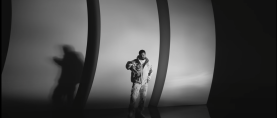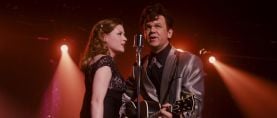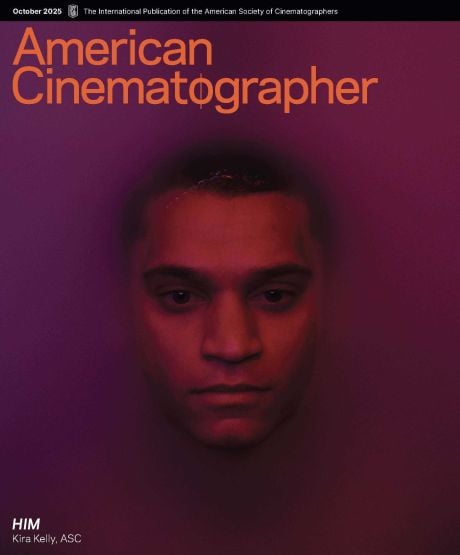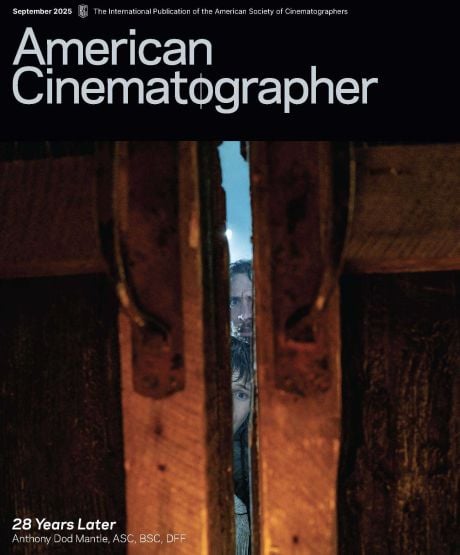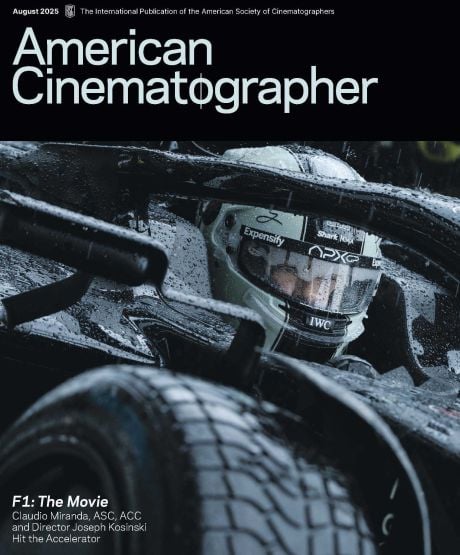
Happyend: Capturing a Confrontation in Dystopian Tokyo
One of AC's 2024 Rising Stars of Cinematography details his approach to a key scene from this interpersonal drama set in a near-future Japan.
When writer-director Neo Sora sent me the script for Happyend, I connected with it immediately. I was struck by how personal and carefully observed it felt despite its near-future setting. The film tells the story of two best friends and the shifting relationships in their social group, as they face a future threatened by an impending major earthquake and growing authoritarianism. It came as no surprise when Neo told me that much of the film was drawn from his own experiences growing up, and from his reflections on how his friendships shifted as a result of political awakenings.

In a crucial moment in the film, different ways of reckoning with the future come to a dramatic head between our main characters, Kou (Yukito Hidaka) and Yuta (Hayato Kurihara), inside of an abandoned waste-management facility turned DIY club space.

In the scene, Kou and Yuta's group of friends has just successfully liberated their confiscated DJ equipment and finished setting it up. The first shot (pictured above) shows Ata-chan (Yûta Hayashi) and Ming (Shina Peng) turning on a worklight as a decoration for their new makeshift club. During prep, I considered at length how to reflect the fact that the film takes place in the future without dramatically increasing the budget. Neo’s vision helped with this challenge, by imagining a future in which some things have advanced, but most things have stagnated — making it, in many ways, a more dingy version of the present. I was inspired by this idea to imagine that power is even more of a problem in the future, and that one way this manifests is that most buildings never use their overhead lights to save energy.

This thematic concept also carried over to our approach to lighting the club set. I spoke with our gaffer, Yasuhiro Kaneko, about placing our units judiciously throughout the space, like sparse “security lights,” in a way that would give us a base level of exposure where we needed it, and leave lots of pockets of darkness to set the mood and bring a feeling of realism to the world of the film. The first shot sets this dark base look for the scene, and also establishes the perspective of Ming and Ata-chan as observers of the unfolding interpersonal conflict that is about to take place.

On the floor below Ata-chan and Ming, Yuta DJs by himself and then calls for Kou to come join him from somewhere offscreen. We used a heavily controlled Arri M18 book light, diffused through Full Grid Cloth, to subtly key Yuta at the DJ station without affecting the background. We decided against using any camera-side fill, to preserve the contrast and shape on Yuta and keep things consistent with the darkness of the space.
Read More on Cinematographer Bill Kirstein and the Rest of the AC 2024 Rising Stars Roster
This shot and the reverse that follows were both captured on a 85mm TLS Minolta Rokkor, for a specific reason: We wanted to approach this film as a "memory recalled in the future," presented through the perspective of characters looking back on formative events long after they occurred. With this in mind, we chose to use longer lenses from both the TLS Minolta Rokkor and Angénieux Optimo Ultra sets — 50mm and above — wherever possible, combined with a more distant camera position and deep depth of field. The subconscious effect of this approach is an image that feels present and grounded in reality (thanks to the deeper T-stop), and yet, when glimpsed from afar, "remembered." It's as if the viewer is looking through a pair of binoculars that allows one to see something one otherwise couldn’t, while still feeling far removed from it.

The scene takes a tense turn when Kou tells the typically carefree Yuta that there is somewhere else he needs to be. Yuta quickly turns on Kou, attacking him for prioritizing a girlfriend over their friendship. To convey how a memory can exist as a series of single, unbroken moments, we wanted to use longer takes to ground the viewer in the story, while giving our characters time and space to come to life onscreen — so, this moment is presented as a continuation of the shot above, after Kou has entered. We were able to stage the actors carefully so that Yuta could walk into a new key light, which also served as Kou’s edge light — a LiteGear LiteMat Plus 4 positioned up the stairs off-frame left.

Next, Ata-chan and Ming react, expressing their feelings of awkwardness about the growing conflict between Yuta and Kou.

Below them, Kou hesitates and then leaves, realizing that the immovable Yuta doesn’t understand him. For time-management purposes, my strategy was to light and shoot this scene by moving the book light, while making only minor adjustments to our other units. The effects of this approach are pictured in the shot above.

In a wide shot that highlights the vast space and darkness between the friends, we see that Kou has stopped in a stairwell, just out of Yuta’s view. Kou makes a decision and strides back toward the DJ setup, angrily accusing Yuta of only caring about music. In this shot, we can see our security-light motif combined with the lights that the friend group has installed in the former club green room. (In the frame above, see the windows top-of-frame right). We used an Arri SkyPanel S60-C in the catwalk at the very back of the facility to reveal the size of the space, which helped enhanced this moment's feeling of isolation.


The vehemence of Kou’s words startles Ata-chan and Ming, who have been watching Kou and Yuta from above. In this moment, Ata-chan drops the tungsten work light he was holding, and it bounces out of control against the dark background. The light slowly sways as it settles, casting Kou and Yuta's moving shadows on the facility's dingy concrete walls. The rest of their argument plays out in dialogue over a single shot of their shadows as they move on the wall.
I always find it gratifying when lighting can both literally and symbolically tell a story. In the case of our scene, the falling light perfectly tells the story of how the rift between Kou and Yuta disrupts their group of friends, as the fight surprises Ata-Chan and physically interrupts his lighting task. On a deeper level, the story of the scene is about two boys who struggle to express the emotional changes they’re undergo to one another. To reflect this struggle, our film language abstains from rendering the characters' conflicts directly, instead introducing visual strategies — such as the cutaway to the swinging light during the characters' first true argument — to convey feelings of rupture and circumlocution. Novel, singular moments within a story often ask for similarly novel, singular images.

Withholding the visual presence of our actors also helped shift our focus to the words our characters speak, and invites the viewer to observe their philosophical debate. Both take the form of shadows, each with valid points to express. This shot also connects to the metaphorical significance of the earthquake that takes place in Happyend: The viewer is presented with a moment in which the characters' friendship, as sure as the earth they stand on, is shaking. Though it is not a literal earthquake happening, the shaking light evokes the shifting tectonics of their relationship.
We tested several strategies to find the ideal shadow effect. Ultimately, we achieved the best result by standing on a step ladder and using a handheld Arri 650 Plus fresnel, placed about eight feet away from the actors. Gaffer Kaneko, best person electric Teizo Kakuda, key grip Tsuneyuki Aikou, Neo, and I took turns trying to achieve the perfect sway to replicate the tungsten work light slowly coming to rest. Neo ended up being the best at this, so he graciously executed the lighting gag featured in the film.
This shot is also an example of how Neo wanted to craft the film for the theatrical experience. In the theater, Kou and Yuta’s shadows tower over the audience, just as the memories of our youth can loom over us. We often chose to go wider to create this immersive experience for the big screen audience; we hope viewers can sense the materiality of the film's world in a way that makes them feel like they could step into it. Neo and I agreed that a deeper depth of field would support this goal, and would showcase the texture of our locations, so we shot the whole film between T4-T8. This scene had the benefit of the real aged patina of a massive waste-disposal facility, and as always, our brilliant production designer, Ataka Norifumi, was able to thoughtfully augment the location to create the world of the film. We couldn’t have been happier.
Images courtesy of Film Movement.


